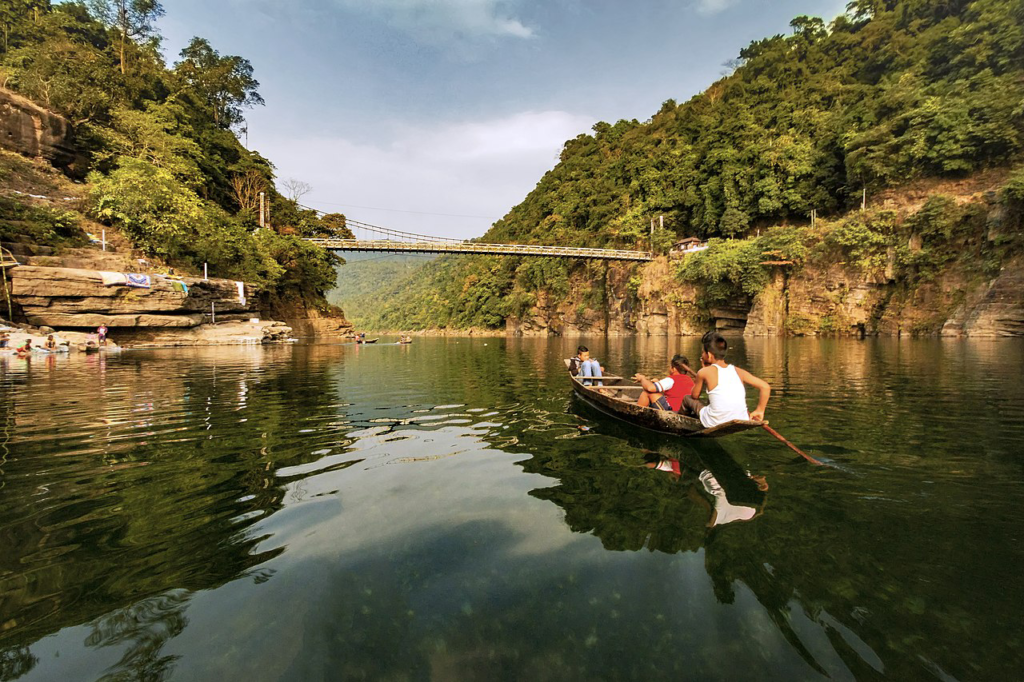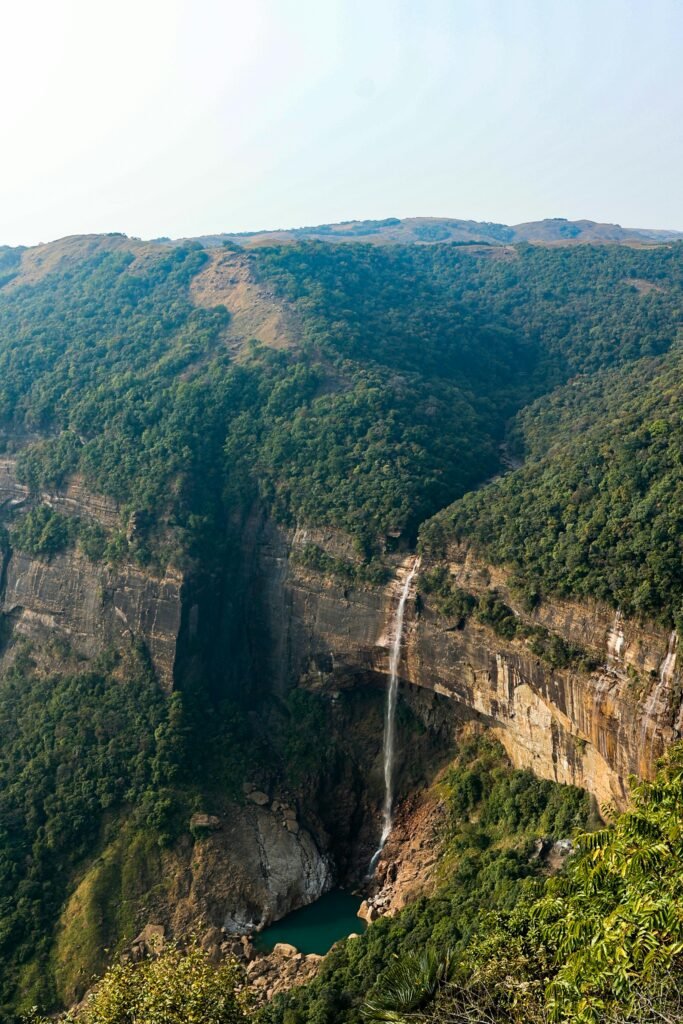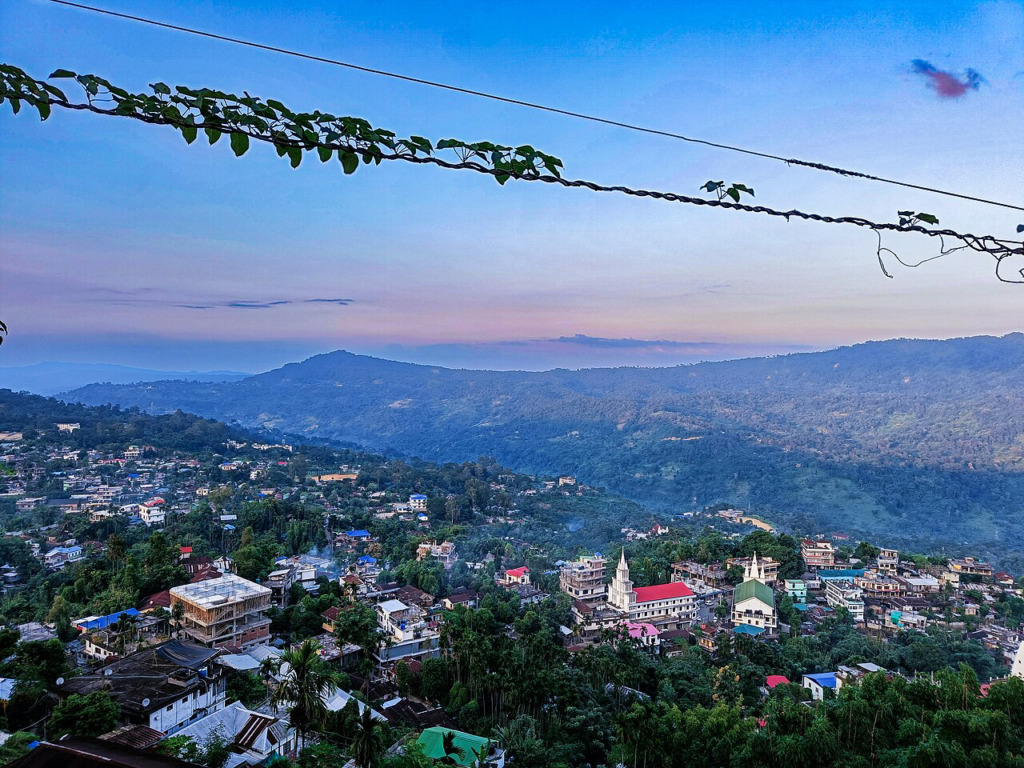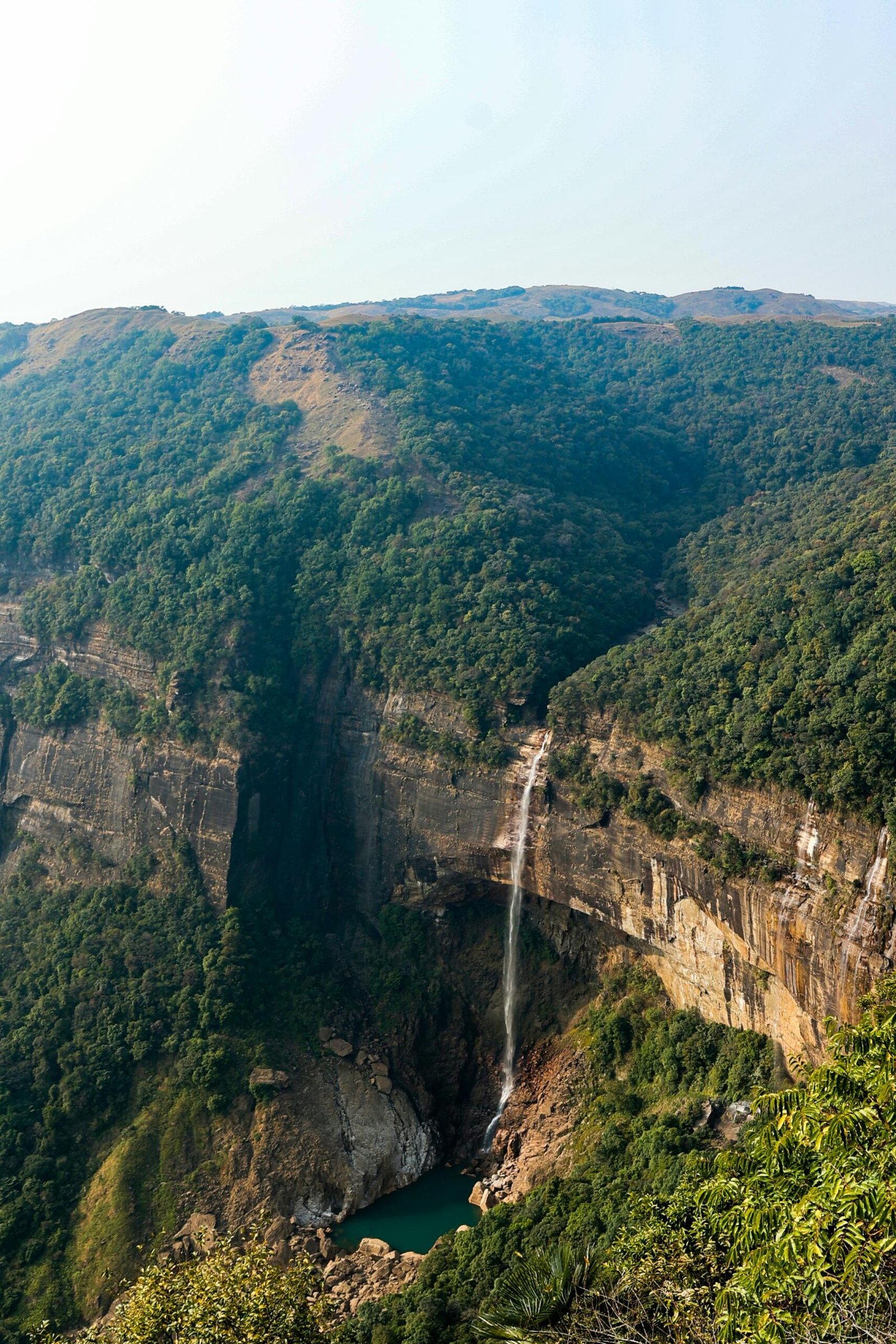
Introduction to North East India’s Tourist Destinations
Tourist Destinations of North East India is a treasure trove of captivating tourist destinations, each reflecting the vibrant culture, rich history, and stunning landscapes that define this diverse region. From the lofty peaks of the Sikkimto the serene rivers of the Meghalaya, North East India offers an array of experiences that cater to various interests, making it an essential stop for travelers seeking both adventure and tranquility.
Natural beauty is another hallmark of North East India’s tourist attractions. The serene landscapes of Sikkim, the lush green valleys of Meghalaya, and the picturesque lakes of Manipur present a variety of opportunities for outdoor activities.
In conclusion, the alluring tourist destinations in North East India promise an unforgettable experience, filled with cultural engagement, natural beauty, and gastronomic delights that beckon travelers from around the globe.
Shillong: The Scotland of the East

Shillong, the capital city of Meghalaya, another tourist Destinations of North East India,is often referred to as the “Scotland of the East” due to its picturesque landscape and rich cultural heritage. Nestled amid rolling hills, this charming city offers a unique blend of natural beauty and urban charm that captivates visitors from around the globe. As you explore Shillong, you will discover an array of attractions that highlight the region’s magnificent scenery and vibrant local culture.
One of the must-visit destinations in Shillong is the Shillong Peak, which stands at an impressive height of 6,449 feet. Offering a panoramic view of the city and its surroundings, this peak is popular among both tourists and locals. The breathtaking vistas, particularly at sunrise and sunset, create a perfect backdrop for memorable photographs. In addition to its scenic beauty, the peak is home to a fascinating array of flora and fauna, making it a great spot for nature enthusiasts.
Another gem in Shillong is the Elephant Falls, a stunning three-tiered waterfall located just a short distance from the city. Surrounded by lush greenery, Elephant Falls is a serene escape from the hustle and bustle of urban life. Visitors can enjoy the soothing sound of cascading water while taking in the natural beauty that envelops the area. The falls also provide an excellent opportunity for photography and leisurely walks in the surrounding region.
With its enchanting landscapes and rich cultural experiences, Shillong undoubtedly deserves its title as the “Scotland of the East.” Whether you are seeking adventure or relaxation, this enchanting destination offers something for every traveler. Explore Shillong and discover the hidden gems that await you in this remarkable region of North India.
know more about Shillong
Dawki Valley: Nature’s Hidden Paradise

Dawki Valley, a best experience for tourist Destinations of North East India,nestled in the northeastern state of Meghalaya, is often regarded as a hidden paradise for nature enthusiasts and adventure seekers alike. The valley is famed for its exquisite natural beauty, particularly the stunning Umngot River, known for its crystal-clear waters that manifest a remarkable shade of turquoise. This natural wonder has garnered attention for its transparent quality, allowing visitors to witness the riverbed and the abundant aquatic life that thrives beneath its surface, creating a mesmerizing visual experience.
One of the most popular activities in Dawki Valley is boating on the Umngot River. Tourists can hire traditional wooden boats, offering them an intimate experience of the valley’s scenic landscape. The gentle ripples of the water against the boat can evoke a sense of tranquility, while the surrounding hills and lush greenery enhance the ethereal ambiance. This experience of boating is not only a perfect way to unwind but also serves as an opportunity to capture stunning photographs of the landscape, making it a favored choice among travelers.
Additionally, the local bamboo lodges provide unique accommodations that reflect the natural setting and cultural heritage of the region. Staying in these eco-friendly lodges allows visitors to immerse themselves in the serene environment of Dawki, where they can wake up to the sound of nature and the beauty of the surrounding landscape. The lodges are strategically located to maximize scenic views, enhancing the overall experience of this captivating destination.
Dawki Valley, with its breathtaking views and unparalleled natural beauty, stands as a prime destination for those seeking solace in nature. The combination of the crystal-clear waters of Umngot River, thrilling boating experiences, and cozy bamboo lodgings truly makes it a compelling site for nature lovers and adventure enthusiasts alike.
Cherrapunjee: The Wettest Place on Earth

Cherrapunjee, located in the Indian state of Meghalaya, is often lauded as the wettest place on Earth, receiving an astonishing average annual rainfall that can exceed 467 inches. This unique climatic condition contributes to its breathtaking landscape, characterized by lush greenery, verdant hills, and abundant water bodies. The natural beauty of Cherrapunjee is not merely a backdrop; it fosters an ecosystem teeming with flora and fauna, making it an ideal location for nature enthusiasts.
One of the most striking features of Cherrapunjee is its famous living root bridges. Another tourist Destinations of North East India.These astonishing structures are created by the indigenous Khasi tribe, who have skillfully trained the roots of the Ficus elastica tree to grow across rivers and streams. Over time, these roots become strong and durable, forming bridges that can withstand the test of time and nature. The most well-known of these bridges is the Double Decker Root Bridge located in Nongriat, which attracts trekkers and adventurers from all around the world.
Moreover, Cherrapunjee is home to several stunning waterfalls, including Nohkalikai Falls, one of the tallest waterfalls in India, with a height of approximately 1,100 feet. The spectacular sight of water cascading down a rocky cliff into a pool below is captivating, especially during the monsoon season when the volume of water increases significantly.
While Cherrapunjee offers multiple attractions for tourists, it also presents challenges, primarily due to the heavy rainfall, which can lead to difficult trekking conditions. Nevertheless, the allure of its majestic landscapes and unique cultural heritage makes Cherrapunjee a must-visit destination for those seeking adventure in North East India.
Loktak Lake: A Unique Ecosystem

Loktak Lake, located in the northeastern state of Manipur, stands as a remarkable example of a unique freshwater ecosystem. It is renowned for its distinctive floating phumdis, which are aggregates of soil, vegetation, and organic matter that form a type of floating island. This extraordinary phenomenon supports a diverse range of flora and fauna, contributing significantly to the ecological balance of the region. The phumdis create a habitat for various fish species, making Loktak Lake a crucial resource for local fishermen and an essential site for biodiversity.
One of the most notable features of Loktak Lake is the Keibul Lamjao National Park, which is the only floating national park in the world. This park serves as a sanctuary for several endangered species, including the brow-antlered deer, locally known as the Sangai. The park’s unique floating structure and seasonal changes to the lake’s water levels play an integral role in supporting its rich biodiversity. Visitors to the lake can witness the interdependence of the local ecosystem, where the phumdis act as breeding grounds and habitats for various wildlife species.
In addition to its ecological significance, Loktak Lake is steeped in cultural heritage. The local communities depend on the lake for their livelihoods, utilizing its resources for fishing, agriculture, and even tourism. Traditional practices and economic activities are closely intertwined with the rhythms of the lake, illustrating the historical importance of this natural treasure. The vibrant culture surrounding Loktak Lake offers visitors a unique perspective on how nature and humanity coexist harmoniously. Engaging with the local communities allows travelers to gain insights into their traditions, lifestyle, and the stewardship of this valuable ecosystem. As a destination, Loktak Lake is more than just a visual spectacle; it is an invitation to appreciate nature’s beauty while understanding the delicate balance that sustains it.
Gangtok: A Gateway to Sikkim

Gangtok, the capital city of Sikkim, serves as a vital gateway for travelers aiming to explore the majestic Himalayas. Nestled at an altitude of 1,650 meters, this picturesque city captivates visitors with its stunning views, vibrant culture, and rich history. The blend of modernity and tradition is evident in the architecture, cuisine, and lifestyle of the local population, making Gangtok a unique destination in North India.
One of the primary attractions in Gangtok is the Tsomgo Lake, approximately 40 kilometers from the city center. Surrounded by towering mountains and lush greenery, this glacial lake offers a serene environment for soaking in the breathtaking views. Visitors can engage in activities such as yak rides or simply enjoy a leisurely stroll around the lake. The location is particularly popular among photographers and nature lovers, making it an essential stop for anyone visiting Sikkim.
Another significant site is the Nathu La Pass, which forms a vital link between India and Tibet. Located about 54 kilometers from Gangtok, this historical pass is steeped in Significant, having been a key trade route between the two regions. Today, it attracts tourists not only for its scenic beauty but also for its strategic importance. The route to Nathu La, often lined with vibrant prayer flags, provides a mesmerizing glance into the spiritual essence of the region.
In addition to its natural attractions, Gangtok is home to several renowned monasteries, such as the Enchey Monastery and the Rumtek Monastery, which offer insights into the region’s Buddhist heritage. These spiritual sites are characterize by their intricate architecture. And tranquil atmosphere, providing a perfect escape from the hustle and bustle of city life. Exploring these prominent attractions, Gangtok truly emerges as a compelling starting point for any adventure into the enchanting landscapes of North India.
Ziro Valley: The Cultural Heart of Arunachal Pradesh

Nestled amidst the lush, another tourist Destinations of North East India, rolling hills of Arunachal Pradesh, Ziro Valley is a treasure trove of cultural heritage, serenity, and unparalleled natural beauty. Known for its expansive rice fields and scenic landscapes, this valley serves as a crucial cultural hub for the Apatani tribe, one of the indigenous communities residing in the region. The unique traditions and practices of the Apatani people significantly contribute to the cultural richness of Ziro, attracting visitors from all walks of life.
A key highlight of Ziro Valley is the annual Ziro Music Festival, which has gained popularity not only within India but also internationally. This vibrant event showcases a diverse array of musical talents, providing a platform for emerging artists and established performers alike. The festival not only emphasizes the region’s commitment to preserving its cultural essence but also fosters a spirit of community among locals and visitors. The fusion of music and the natural backdrop of the valley creates an enchanting atmosphere that resonates with every participant.
Beyond the festival, the serene ambience of Ziro Valley makes it an ideal retreat for cultural enthusiasts seeking tranquility away from the hustle and bustle of urban life. The valley’s landscape is dotted with traditional Apatani houses, provide an opportunity for visitors to immerse themselves in an authentic cultural experience. Traditional practices, such as rice cultivation and eco-friendly farming methods, remain integral to the Apatani way of life, reflecting a harmonious relationship between nature and culture.
Ujjayanta Palace: A Royal Heritage Site

Located in the heart of Agartala, the Ujjayanta Palace stands as a testament to Tripura’s royal lineage and architectural brilliance, a historic tourist Destinations of North East India. Built in the late 19th century, this magnificent palace was commissioned by the then Maharaja of Tripura, Radha Kishore Manikya. The structure showcases a blend of Indo-Saracenic, Mughal, and Bengali architectural styles, making it an exquisite example of the region’s rich cultural heritage. Its three striking domes and intricately carved pillars are particularly noteworthy, reflecting the grandeur that once encompassed royal life in Tripura.
Over the years, the Ujjayanta Palace has undergone significant transformations. Following the royal family’s migration to India after the princely states were integrated into the Indian Union, the palace was repurposed into a museum. Today, it houses a variety of artifacts, including traditional costumes, antique weapons, and sculptures that depict the rich history and culture of Tripura. Visitors can explore the numerous galleries that provide an immersive glimpse into the state’s royal past, making it a vital stop for history enthusiasts and tourists alike.
Surrounding the Ujjayanta Palace are beautifully landscaped gardens that enhance its regal charm. Designed in a manner that encourages leisurely strolls, the gardens are dotted with vibrant flowers, lush greenery, and serene water bodies, providing a peaceful oasis amidst the bustling surroundings of the city. This setting not only adds to the aesthetic appeal of the palace but also reflects the thoughtful planning and sophistication of the erstwhile rulers of Tripura.
In conclusion, the Ujjayanta Palace is more than just an architectural marvel; it is a symbol of Tripura’s royal heritage and cultural identity, inviting all who visit to delve into its storied past and appreciate its timeless beauty.
The Scenic Beauty of Taiwang, Jalpaiguri, and Haplong

North East India is renown for its majestic landscapes and diverse cultures. Yet some of its most enchanting destinations remain relatively unexplored. Among these hidden gems are Taiwang, Jalpaiguri, and Haplong, each boasting a unique allure that beckons travelers seeking serene beauty and authentic experiences. Taiwang is characterize by its lush green hills and pristine landscapes. The breathtaking views over rolling valleys, interspersed with vibrant flora, create an idyllic environment for nature lovers. Visitors can embark on various hiking trails that lead to hidden waterfalls and terraced farms, offering opportunities to experience local agricultural practices firsthand.
Equally captivating is Jalpaiguri, a quaint town known for its rich cultural heritage and natural landscapes. The region is home to the Teesta River, which winds gracefully through the hills, providing picturesque spots for picnics and leisure activities. Jalpaiguri also features unique architecture that reflects the synthesis of various cultural influences, making it a perfect place for enthusiasts of history and architecture. The local cuisine further enhances the experience, with flavors that highlight regional ingredients and traditional cooking techniques.
Haplong, on the other hand, is a lesser-known treasure that offers a blend of tranquility and adventure. Nestled amidst hills and dense forests, Haplong provides a sanctuary for wildlife enthusiasts and photographers alike. Its unique biodiversity, featuring various flora and fauna, invites visitors to explore the environment while engaging with the indigenous communities. The warmth of the local culture is evident through lively festivals and traditional crafts, providing visitors with a rich tapestry of experiences beyond the mainstream offerings of North India.
Aizawl: The Capital of Mizoram and its Charms
Aizawl, the picturesque capital city of Mizoram, is an exceptional blend of natural beauty and rich cultural heritage. Nestled atop a ridge with rolling hills surrounding it, the city offers breathtaking panoramic views that are captivating for both tourists and residents. The tranquil atmosphere, supplemented by its vibrant local culture, makes Aizawl a unique destination in North India.
One of the prime attractions in Aizawl is the Mizoram State Museum, which offers an intriguing insight into the state’s history, culture, and traditions. The museum houses a comprehensive collection of artifacts, textiles, and art that highlight the indigenous Mizo lifestyle. Visitors can gain a deeper understanding of the various tribes inhabiting the region and appreciate the historic narrative that has shaped Mizoram into what it is today.
Aizawl is also famed for its local handicrafts, which are emblematic of the Mizo culture. Traditional crafts such as weaving, bamboo work, and pottery are not only beautiful but also carry significant cultural value. Tourists can explore local handicraft markets, where artisans display their unique creations, making it an ideal place to purchase souvenirs that reflect the authentic Mizo heritage.
The city’s lively markets, particularly the Bara Bazar, are another highlight, drawing visitors with an array of goods ranging from local produce to handcrafted items. Here, one can experience the hustle and bustle of daily life in Aizawl, while also indulging in delectable local cuisine that represents the region’s culinary diversity.
Aizawl’s enchanting landscape, complemented by the warmth of its people, makes it a must-visit destination in North India. The combination of cultural heritage, stunning vistas, and inviting markets illustrates why Aizawl holds a significant place among the hidden gems of the region.

Leave a Reply